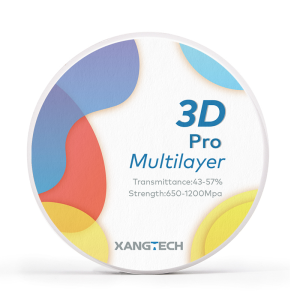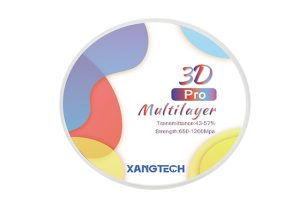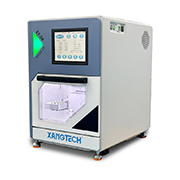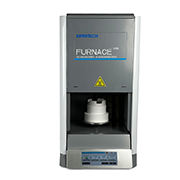Le impiallacce sono materiali dentali realizzati su misura per coprire la superficie dei denti dopo che il dentista ha esaminato il paziente. Poiché possono essere personalizzati sulla struttura dentale del paziente, i nostri blocchi di zirconia forniscono un allineamento dentale più naturale e simmetrico. Inoltre, il processo di impianatura provoca danni minimi ai denti naturali ed è relativamente meno doloroso per il paziente. Allo stesso tempo, le impiallacciate dentali possono riparare lievi disallineamenti dentali, ridurre il numero di trattamenti ortodontici che un paziente deve sottoporsi e rimodellare i denti a forma irregolare.

Mentre la tecnologia dentale continua ad evolversi, lo stesso vale per il numero di materiali dentali adatti alle impiallacciature dentali. In sintesi, diversi materiali hanno i loro vantaggi. I blocchi di zirconia dentali, ad esempio, sono noti per la loro resistenza e traslucenza naturale, e le impiallacciate di porcellana sono molto resistenti e resistenti alla colorazione, popolari tra dentisti e pazienti. Questo materiale è più conveniente di impiallacciate in porcellana. I formatori di impiallacciatura realizzati con blocchi PMMA, invece, possono essere applicati direttamente sui denti e poi scolpiti per ottenere la forma e il colore desiderati. Mentre le impiallacciate in resina composita non sono resistenti alle macchie come le impiallacciate in porcellana, sono facili da riparare se danneggiate. Il disilicato di litio ha eccellenti capacità di trasmissione della luce e di abbinamento dei colori, rendendolo una delle impiallacciate più esteticamente piacevoli disponibili. Non è così forte come i blocchi di zirconia, ma il disilicato di litio ha una resistenza sufficiente per la maggior parte delle applicazioni precedenti. Grazie al suo aspetto naturale, è ideale per creare restauri realistici, soprattutto per impiallacciature anteriori dove l'estetica è critica. Inoltre, il titanio è estremamente resistente e biocompatibile e ha anche eccellenti proprietà meccaniche, ma a causa del suo colore metallico e opacità, è adatto per impianti dentali e generalmente non viene utilizzato per impiallacciature estetiche.
Le impiallacce sono realizzate su misura per abbinare il colore e la forma dei denti naturali e si fondono perfettamente con i denti circostanti. Ciò consente ai clienti di ottenere un sorriso esteticamente piacevole e naturale. Inoltre, coprono efficacemente il decoloramento e le macchie che i trattamenti di sbiancamento tradizionali non possono affrontare, dando un colore più luminoso e più uniforme ai denti. Inoltre, le impiallacciate dentali sono progettate per correggere i difetti nella forma o dimensione dei denti, con il risultato di un aspetto generale più armonioso. Rispetto ad altri metodi di ripristino come le corone dentali, le impiallacciate richiedono di solito alterazioni minime alla struttura naturale del dente e possono preservare più del dente. Struttura S. Dal punto di vista dei costi di manutenzione, le impiallacciate sono particolarmente resistenti alle macchie alimentari e di bevande e sono facili da pulire, mantenendole luminose per un lungo periodo di tempo senza molta manutenzione. I materiali di impiallacciatura moderni, altamente biocompatibili, sono molto sicuri, quindi è improbabile che causino reazioni allergiche o abbiano un effetto avverso sulla bocca.

Il mercato delle impiallacciature dentali dovrebbe registrare una crescita significativa in futuro con la crescente domanda di procedure dentali cosmetiche. La continua ricerca su nuovi materiali da parte dei ricercatori potrebbe portare allo sviluppo di impiallacciature dentali a prestazioni migliori in futuro. Inoltre, con la sostenibilità come esigenza dell'ora, c'è una crescente domanda di materiali dentali ecologici. Le future impiallacciature possono essere realizzate con materiali biodegradabili o riciclabili per attirare i consumatori consapevoli dell'ambiente. L'emergere di questi materiali emergenti potrebbe accelerare l'espansione del mercato per l'industria delle impiallacciate dentali. È evidente che i professionisti dentali si concentreranno sempre più sulla fornitura di soluzioni su misura per impiallacciature dentali, man mano che cresceranno le aspettative dei consumatori per una cura personalizzata. Ciò include la personalizzazione di sfumature, forme e dimensioni per soddisfare obiettivi e preferenze estetiche individuali. Ciò porterà anche alla segmentazione del mercato delle impiallacciature dentali e all'emergere di più mercati focalizzati su impiallacciature dentali finemente personalizzate in futuro. Guidato dai progressi tecnologici, dalle mutevoli esigenze dei consumatori e dall'attenzione rivolta alla cura personalizzata, il futuro del mercato delle impiallacciate dentali sarà caratterizzato da una vibrante crescita e innovazione. Mentre i professionisti dentali si adattano a queste tendenze, è probabile che il mercato delle impiallacciature dentali veda una gamma più ampia di opzioni di trattamento, materiali più avanzati e un accesso più conveniente, cambiando in ultima analisi il paesaggio dell'odontoiatria cosmetica.












